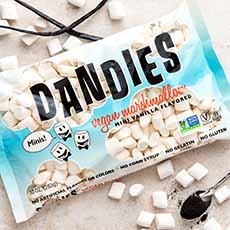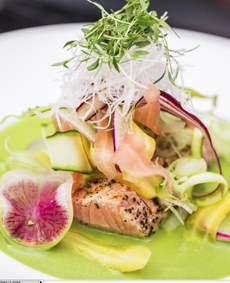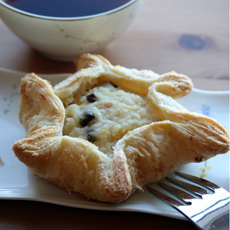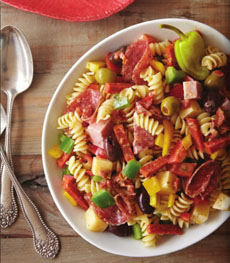|

[1] A no-bake s’mores pie (photo © Brown Eyed Baker).

[2] For a change, substitute pound cake for the graham cracker s’mores crust (photo © American Egg Board).

[3] These mini-marshmallows are vegan and absolutely delicious (photo © Dandies).

[4] The recipe calls for chocolate ice cream, but you don’t have to use plain chocolate. How about chocolate chip, or double fudge brownie (photos #4 and #5 © Dreyer’s).

[5] Even more out there: rocky road ice cream in a s’mores ice cream cake or pie.

It’s easy to assemble s’mores cupcakes (photo © Crumbs Bake Shop [now closed]).
|
|
You don’t need a campfire to celebrate National S’mores Day, August 10th. Here are recipes that are just as much fun.
First, a no-bake S’mores Pie, the creation of Brown Eyed Baker, Lauryn Cohen. Here’s her recipe, shown in the photo.
The marshmallows are browned with a chef’s torch (most popularly used to make crème brûlée).
Prefer cake to pie? Here’s a S’mores Ice Cream Cake recipe from the Wisconsin Milk Marketing Board. Recipes for S’mores Cupcakes and S’mores Ice Cream follow below.
RECIPE #1: S’MORES ICE CREAM CAKE
Ingredients For 10 Servings
1-3/4 cups graham cracker crumbs,* divided
1 loaf pound cake or chocolate pound cake
1 rectangular container (1-1/2 quarts) chocolate ice cream
10 ounces mini marshmallows
Optional garnish: chocolate sauce
_________________
*You can substitute a prepared graham cracker crust for the crumbs, sugar and butter. You will still need some graham cracker crumbs for garnish.
_________________
Preparation
If you have a chef’s torch, use it instead of the broiler in Step 3.
1. LINE a broiler-safe 8×8-inch glass or metal baking dish with foil, overlapping the edges of the dish with the foil (to help lift out the cake). Cut the pound cake into 1-inch slices (or as thick as desired) and tightly pack them into a layer.
2. SOFTEN the ice cream at room temperature for 5 minutes; remove the carton from the ice cream and cut the ice cream in half. Place both halves on top of the cake layer, trimming as necessary. Use a spatula to press and spread the ice cream evenly. Add a layer of graham cracker crumbs. Cover and freeze solid, for 30 minutes or more.
3. PREHEAT the broiler with the rack in the lower part of the oven. Remove the ice cream cake from the freezer; top with marshmallows (tightly placed together), spreading to edges of the pan, pressing down to seal. Place cake under the broiler, 8 to 10 inches from the heating element. Broil until marshmallows are puffed and golden, 2 to 3 minutes, watching constantly.
4. REMOVE from the oven, sprinkle with remaining 1/4 cup graham cracker crumbs, and drizzle with optional chocolate sauce. Cut and serve immediately.
RECIPE #2: S’MORES CUPCAKES
Ingredients
Chocolate cupcakes
Marshmallow creme
Graham crackers
Chocolate bar
Optional: mini marshmallows
Preparation
1. BAKE or buy chocolate cupcakes. Frost with marshmallow creme. Add optional mini marshmallows and brown with a chef’s torch.
2. DECORATE with pieces of chocolate bar and graham cracker.
Ice Cream Cupcakes Variation
Instead of marshmallow creme, substitute vanilla or marshmallow ice cream. Garnish with mini marshmallows, chocolate and graham crackers.
RECIPE #3: S’MORES ICE CREAM
Some brands offer s’mores ice cream, but you can make your own. You get to add your preferred form of marshmallow into this recipe: either a marshmallow creme swirl or mixed-in mini marshmallows.
Ingredients
Vanilla ice cream
Chocolate chips or chunks
Graham crackers, crumbled
Mini marshmallows or marshmallow cream
Optional: pound cake, waffle cones
Preparation
1. SOFTEN the ice cream on the counter. If using mini marshmallows, cut them in half.
2. SWIRL the marshmallow cream through the ice cream; alternatively, mix mini marshmallows into the ice cream.
3. MIX in the chocolate chips and graham crackers. Return the ice cream to the freezer.
4. SERVE in bowls, or with a slice of chocolate pound cake, or in a waffle cone.
|











